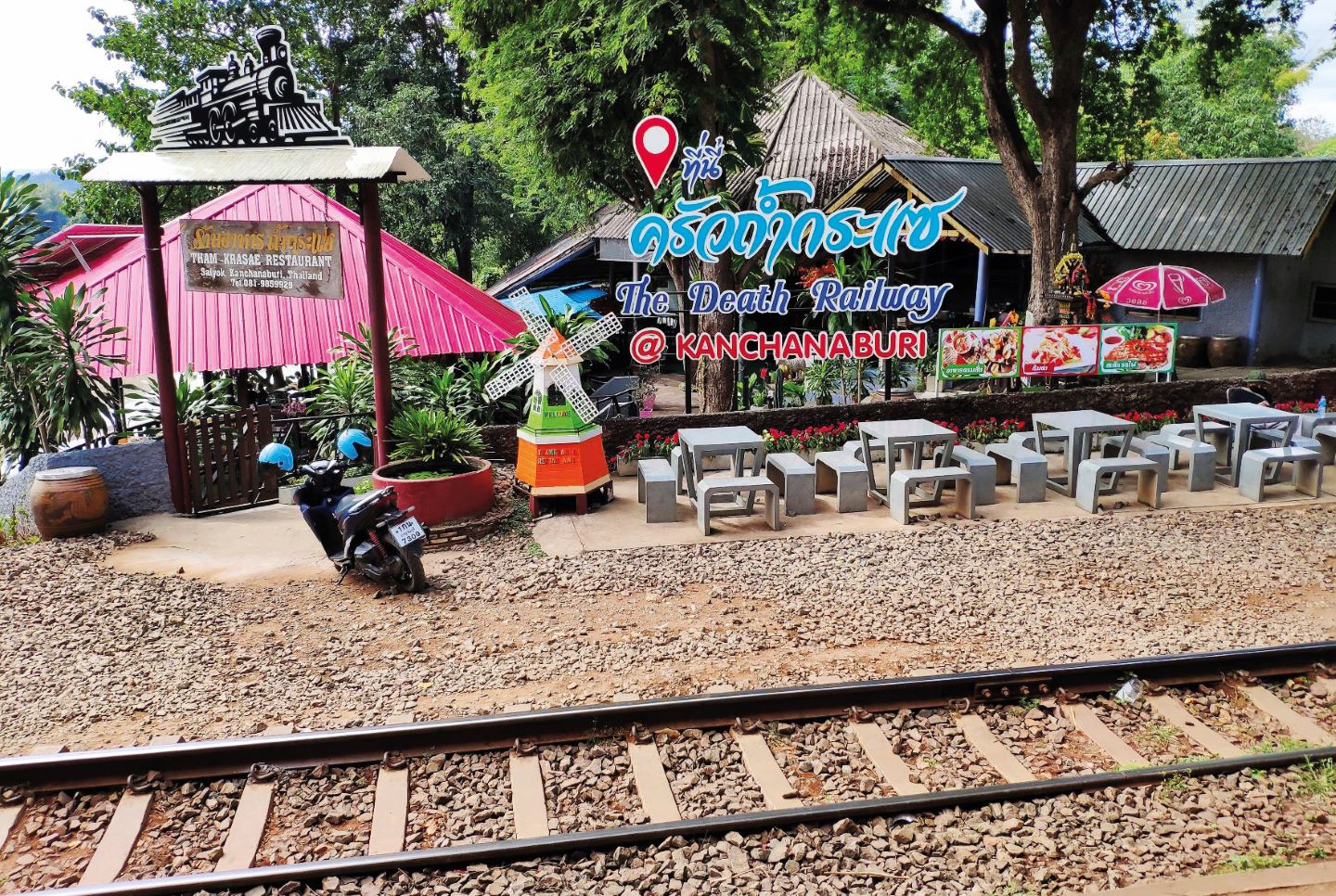
The Burma-Thailand railway, aka the ‘Death Railway’, has become a tourist attraction in its own right (All photos: Lee Yu Kit)
Every now and then, life accommodates art. Usually the other way around, the infamous Bridge on the River Kwai in Kanchanaburi, Thailand, is one such example.
In 1957, the movie The Bridge on the River Kwai was released to enormous critical and commercial success. It garnered seven Academy Awards and is included in the American and British Film Institutes as one of the greatest films ever made. The plotline is pure fiction, although it is based on the construction of the Burma-Thailand railway during WWII at such a staggering cost in human lives and suffering that it has lived on in infamy as the Death Railway.
train.jpg

Although it depicts events in Thailand, the movie was filmed in Sri Lanka. Such was its success, however, that tourists flocked to Thailand seeking the bridge, but there wasn’t even a River Kwai.
In 1960, Thailand decided to rename the Mae Khlong as the Khwae Yai — which, phonetically, sounds like the fictional river — and that is how the Bridge on the River Kwai came to be. A big tourist draw today, the actual bridge looks nothing like the one in the show, and a river had to be renamed so that real life could accommodate Hollywood make-believe.
What the movie has done, however, is immortalise another dark chapter in the human capacity to inflict harm on other humans. The remnants of that sorry episode can not only be seen but also experienced in Thailand.
Journey's start
One afternoon, I caught the train from Bangkok to Kanchanaburi, a cheerful, wind-in-your-face experience in a classless, free-seating and non-air-conditioned coach.
The urban sprawl of Bangkok yielded to the timeless countryside, fields and scraggly vegetation sweeping past, startled birds rising like scattered confetti from banks of rushes, white long-legged birds daintily picking for food in dark, shimmering pools, traffic on pause as the train rushed imperiously past railway crossings. The train clickety-clacked and rocked in that oddly soothing motion as it crossed sluggish green rivers and the backyards of small Thai towns with hard-to-remember names.
kanchanburi_rlwy_station.jpg
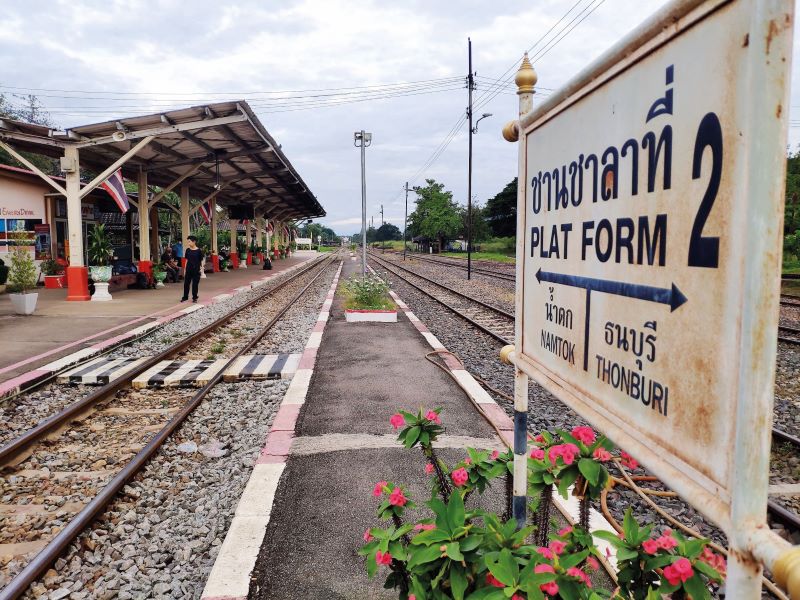
The train stopped briefly for people to get on and off, and for food vendors to ply packets of food carried in wicker baskets up and down coaches. Train stations were quaintly antique, small wooden buildings with tiled roofs and neat gardens. Officers smartly attired in khaki waved red and green flags and the train would gather speed and rush along the polished rails.
The train stopped at Nong Pladuk Junction, where a sign on a boulder declared that work began there in September 1942 to link Thailand to Burma (now Myanmar) by rail. At the same time, work started in Burma, for both sides to eventually join in October 1943. Nong Pladuk Junction was the beginning of the Death Railway in Thailand.
Casualties of war
In 1942, sea routes from Japan were threatened by Allied naval forces. In order to supply their military units in Burma, the Japanese Army decided to build an overland route between Thailand and Burma. The route had been surveyed by the Allies decades earlier and deemed too difficult for such a venture.
The Japanese Army had an almost inexhaustible supply of labour: Allied prisoners of war, captured in the catastrophic fall of fortress Singapore in February 1942, as well as labourers conscripted from the Southeast Asian territories captured by the Japanese. The labourers, comprising Burmese, Chinese, Malays, Indians and Javanese, were mostly illiterate and disorganised, and they would bear the brunt of the casualties of building the railroad.
japanese_memorial.jpg
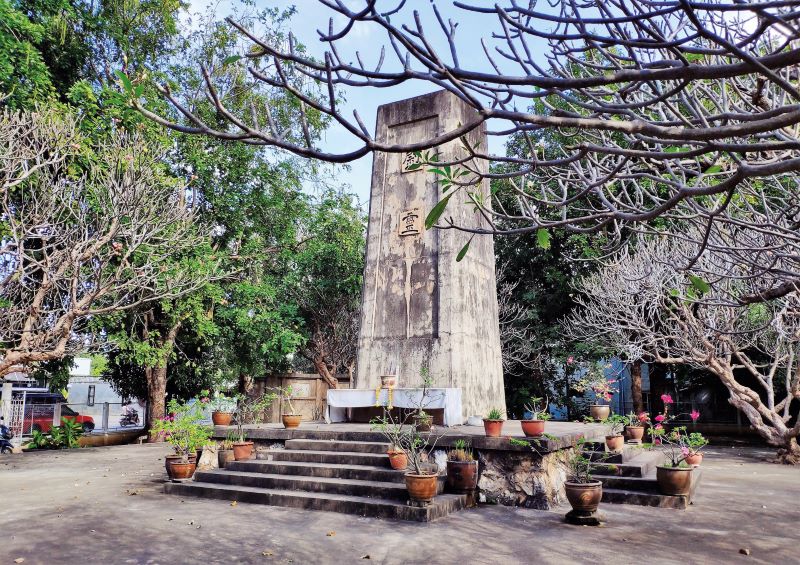
Called the rōmusha, they are mostly undocumented, forgotten and unmourned, with only a forlorn memorial in Kanchanaburi town. Although an estimated 12,000 Allied prisoners of war (PoWs) died during the construction of the railway, the number of rōmusha deaths, though not accurately known, is estimated at 90,000.
I alighted at Kanchanaburi railway station and took a pickup truck taxi to my hotel. Kanchanaburi is not big, laid out lengthwise along one side of the Khwae Yai River and its junction with the Khwae Noi River. It is a typical Thai town with its pickup-truck culture and food stalls serving delicious street food.
The railway line runs parallel to the river and the town. At its northern end, the railway loops and doubles back down the other side of the river, eventually ending some 40-plus km away in Namtok, the current terminus of the railway line.
Where it spans the river on the northern end, is the bridge, from which the railway once continued into the rugged hill country at Three Pagoda Pass and to its western terminus at Thanbyuzayat, Burma. After the war, much of the 415km railway was dismantled, leaving the current 130km section in Thailand.
What was once the railway, built at such great human suffering, was quickly swallowed by the jungle and agriculture, forgotten, until in 1983, an Australian ex-PoW committed to commemorate the Allied PoWs and the local Thais who risked their lives to supply them with food and medicine.
Thru' hellfire and high water
The next day, I stepped into my hired car for a drive to Hellfire Pass, maintained by the Australian government. The country was languorously rural as we drove on a well-surfaced highway, turning off 80km later into the commemorative site. I parked in the shady parking area and alighted at the Hellfire Pass Interpretive Centre.
While the earlier parts of the railway traversed flat terrain, in the rugged hilly country, prisoners working with basic hand tools carved out an even path as the trains could only traverse gentle inclines. Bridges had to be built to span rivers and gorges. Where there were hills, cuttings had to be dug to accommodate the railway.
memorial_stone.jpg
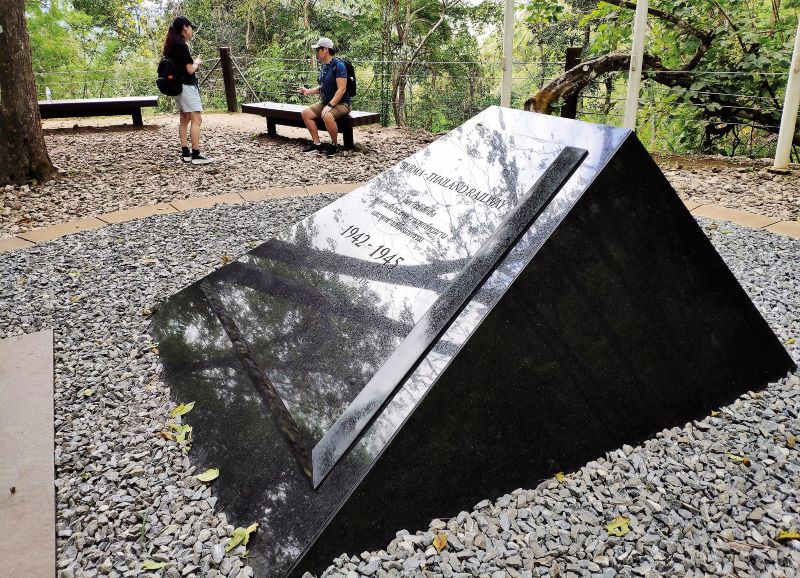
The deepest and longest of these was Konyu Pass, where the rail cut through a rocky hill. Prisoners drilled holes to insert sticks of dynamite, with the resulting debris being hauled away in rail cars or by hand in baskets.
During this period, the Japanese sped up work in order to meet construction deadlines, resulting in backbreaking labour being conducted into the night by sick and malnourished prisoners. During the rainy season, working conditions became even more treacherous. Tropical diseases such as dysentery, malaria and cholera; the lack of medicines and medical facilities; inadequate rest and nutrition; and the brutal treatment by the Japanese captors all exacted a deadly toll on already weakened physiques.
Working by the light of oil lamps late into the night, it was like a scene from hell. Allied PoWs called this Hellfire Pass.
The Interpretive Centre was built in the 1990s and is maintained by the Australian government on Thai territory. It was refurbished in 2018. Just after the reception was a viewing point of the country below, fecund with verdure under a cotton-wool sky, with hills in the distance.
The walk-through provided a background to the Burma-Thailand railway with various facets of the construction, from the physical conditions to the treatment of prisoners to their fate after the war, brought home by narrative boards, photographs and audio recordings from ex-PoWs recollecting their experiences.
The walk ended at a lower floor, out of the cool air-conditioned building into the humid heat, down a wooden boardwalk, and onto the old railway path, surfaced with pebbles, which led to the deep cleft in the rock — Hellfire Pass.
There was a silence — an admixture of awe and sadness, an emotional load of sudden unburdening and recognition of a memory that was strangely familiar but strangely amiss. On the cool rock face were commemorative plaques, flags, a broken drill bit embedded in the rock, and telltale splinters of pain, suffering, agony, despair and bravery.
War, then peace
Surviving Allied army veterans visit the site every year, fewer and fewer as time goes by, to remember fallen comrades and that faraway time.
On the way back to Kanchanaburi town, we stopped by a section of the railway running along a cliff wall, with the green river flowing in parallel about 10m below. Wooden trusses and bridges had to be built to support the railway against the cliff face. In the cliff was Krasae Cave, where prisoners could rest, and where now a golden Buddha statue sits within, its serene visage looking out towards the entrance and the light.
sai_yok_noi_waterfall.jpg
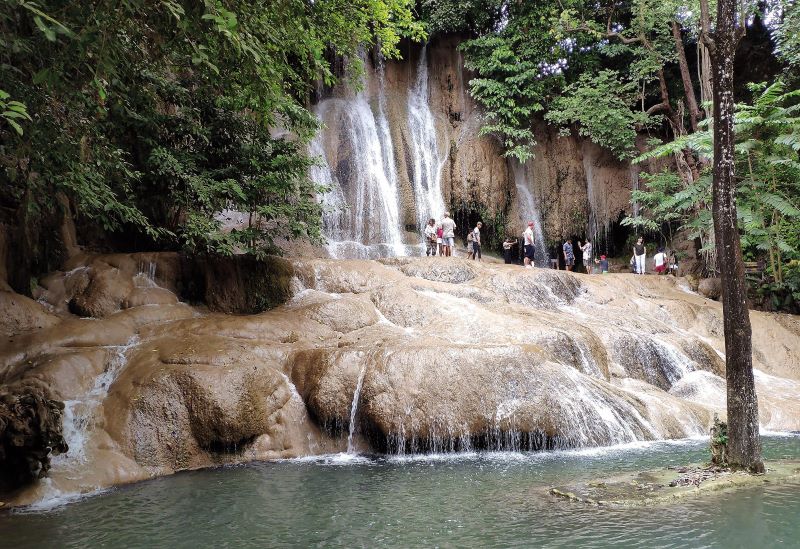
That evening, I dined on a floating pontoon on the river, looking towards the bridge. It was a small, plain metal railway bridge, unremarkable but for its story of bloodshed and human suffering, said to equal a human death for every sleeper laid along the railway.
It could have been a grim reminder of death and suffering, but it was alight with light bulbs during the once-a-year River Kwai Memorial Week. I saw it otherwise: as a shining reminder of the human spirit and resilience under crushing circumstances, of courage in the face of despair, of brotherhood and survival, as its reflection shivered and shimmied in the dark waters of the flowing river below.
This article first appeared on Apr 24, 2023 in The Edge Malaysia.


